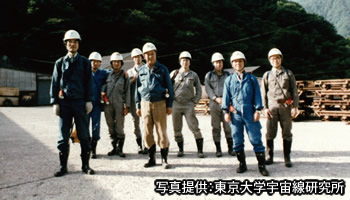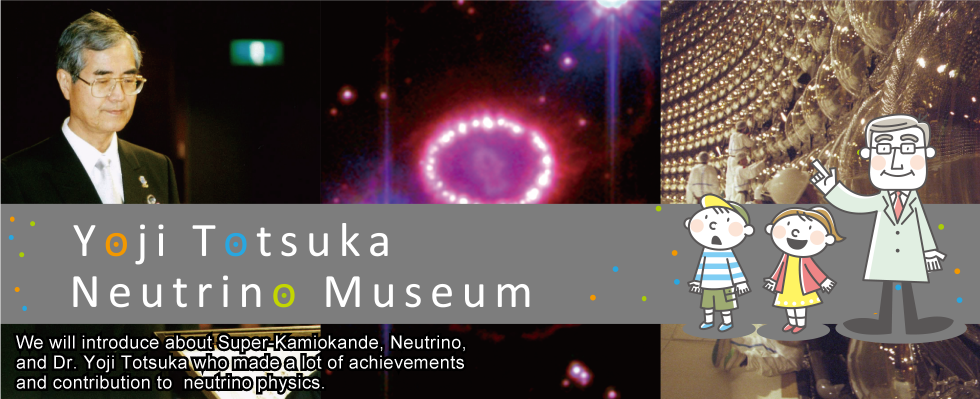- Yoji Totsuka Neutrino Museum
- Who is Yoji Totsuka?
- What did Yoji Totsuka do?
-
Japan is at the world's forefront in the Nobel prize winning field of neutrino research. At the center of the historical scientific breakthroughs has always been Dr. Totsuka.
In this corner, let's take a look back at Dr. Totsuka's brilliant achievements. - What is the "Super-Kamiokande"?
- At the Neutrino Museum, Lets check it out! Lets experience it!
Japan is at the world's forefront in the Nobel prize winning field of neutrino research. At the center of the historical scientific breakthroughs has always been Dr. Totsuka.
In this corner, let's take a look back at Dr. Totsuka's brilliant achievements.
Supernova Explosion and the Observation of Neutrino
-
On February 23, 1987, the Super-Kamiokande's predecessor, Kamiokande, detected neutrinos emitted by a supernova explosion for the first time in the Large Magellanic Cloud.
The supernova explosion theory was proven and it sparked the advent of neutrino astronomy.
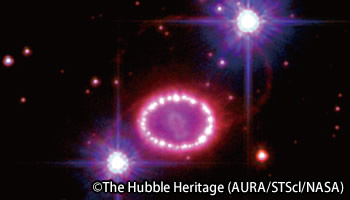
Dr. Koshiba Pioneered Neutrino Astronomy
-
Dr. Koshiba received the Nobel Prize for physics in 2002 in recognition for pioneering neutrino astronomy.
This neutrino astronomy was passed on to Dr. Totsuka and Dr. Kajita and has continued to develop.
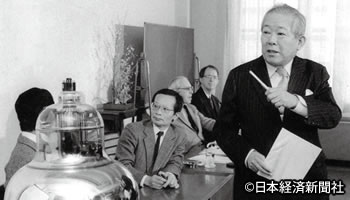
Super-Kamiokande Construction and Direction
-
Dr. Totsuka succeeded Dr. Koshiba in 1987 following his mandatory retirement and spearheaded construction of the Super-Kamiokande.
Upon completion, he, as facility director, and Dr. Kajita lead the research group that made the "neutrino oscillation discovery", a major historical breakthrough, in 1998.
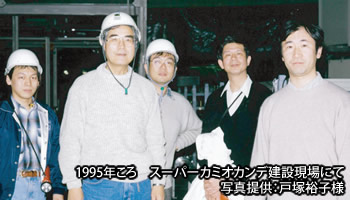
Super-Kamiokande Director, Yoji Totsuka
-
Dr. Totsuka's direction as leader of Super-Kamiokande researcher group produced an historical scientific breakthrough in 1998 with the "discovery of neutrino oscillations". Nobel Laureate in Physics of 2015 Dr. Takaaki Kajita was also a member of this group.
